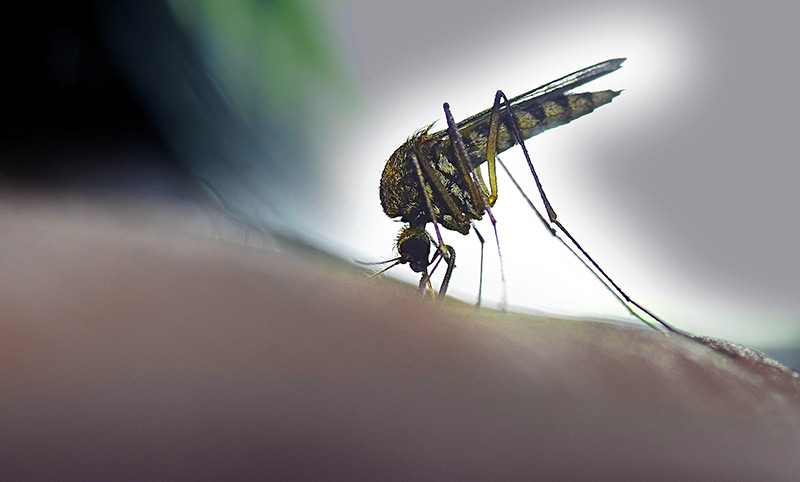Fighting Zika
 By Laura Pizzo
By Laura Pizzo
Source AggieXtra
Immediately after scientists discovered the connection between Zika and Brazilian babies with microcephaly – the condition that causes a baby’s head to be unusually small, often leading to brain damage and premature death – UC Davis researchers were on the case.
And in the months following this discovery, as concern of a global pandemic began to spread, UC Davis experts have helped solve many mysteries about the virus. These discoveries include the fact that the virus is transmitted through sexual contact and may be transmitted by the household culex mosquito—more common to the United States than other mosquitoes known to transmit the virus.
The worldwide effort to uncover more about Zika continues with compounding urgency as mosquitos in other parts of the world, including in the United States, begin to transmit the virus to humans.
The need to find answers as quickly as possible has driven UC Davis researchers to rely on their strengths in collaborative work, inspiring them to share real-time information as quickly as possible with a worldwide scientific community, media and the general public.
”We don’t have to panic,” said UC Davis Distinguished Professor and Chemical Ecologist Walter Leal, who helped make the aforementioned discoveries about Zika, “but we have to know.”
Know what, you may ask? Well, everything we can.
One Health approach

Jonna Mazet
Jonna Mazet, a UC Davis wildlife epidemiologist and veterinary science professor, has quickly become a nationally sought after expert on Zika, having recently appeared on a new PBS special, “Spillover – Ebola, Zika & Beyond.” On the show, she spoke about the relationship between animals, humans and the environment—a core and foundational research strength of UC Davis, which the university refers to as One Health. Mazet also described her role as principal investigator for PREDICT, a first-of-its-kind global consortium working to predict the next bad pathogen, similar to Ebola, HIV or SARS.
Mazet said outbreaks like Zika may become more frequent due to the rise in global population, which is expected to reach more than 9 billion by 2050.
“Humans are outgrowing our globe, and as we push further and further into areas where we have not traditionally lived, we’re being exposed more and more to the animals and their pathogens that live in these areas,” she said.
In five years, PREDICT has discovered more than 800 previously unknown viruses, some of which could cause an outbreak. Mazet said PREDICT’s goal is to know what threats exist; how these diseases are transferred between animals, humans, and the environment; and how to diagnose them ahead of time, so that when an outbreak initiates, the virus or disease is easy to identify and can be treated immediately at the source.
“To prevent outbreaks, it takes an informed surveillance system, a qualified laboratory network, and an informed community to listen, understand and take effective action,” she said.

Walter Leal
Leal, who works in a different discipline and college than Mazet, echoed that community education and action is one of the most essential ways to prevent an outbreak. It is why he hosted a free Zika symposium at UC Davis in May 2016 and why he is conducting research on how mosquito repellants can prevent the spread of the virus. Leal, who is native to Brazil, happened to be in his home country when the connections between Zika and microcephaly emerged in October 2015. He has since been commuting back and forth to help study Zika with a team of Brazilian scientists.
“If you catch a cold, you don’t go around spreading the virus without thinking—you cover your nose and your mouth,” explained Leal. “So why not use a repellant in the same way? That’s something an ordinary person can do without going to a doctor, even if you’re not sure you’re sick.”
Reducing the number of people who contract the virus is critical, even though not everyone shows symptoms, because experts are still not certain how long the contagion lasts.
“When a man gets infected, even months after his blood is clean of the virus, he will still have some of the virus in his sperm so there may be risk of transmission to his sexual partners,” Leal explained, of a recent discovery.
Leal is encouraged by UC Davis researchers and others who are searching for a cure, but he recognizes that vaccines can take years to be developed and many more to be approved. For example, West Nile has been infecting people in the U.S. for 17 years, and we still don’t have a vaccine; however, repellants have been proven to help.
“The bad news came when we discovered that the culex mosquito may also be a vector – which is an organism that transmits a disease or parasite,” he said. “And when Zika started showing up in Florida, that raised more concern. What we’re trying to avoid as much as possible is having a vector and the disease in the same place. Because if you have one and not the other, you’re still safe. For example, we don’t have malaria in California, but we have one of the vectors.”
Developing a cure
Several potential solutions to the Zika health threat are underway at UC Davis.
Nonhuman primate studies at the California National Primate Research Center (CNPRC) at UC Davis offer a critical step in understanding the biology of the virus, how to treat it and how to prevent the infection with a vaccine, with the ultimate goal of preventing an epidemic in both human and wild primate populations.
CNPRC’s studies are aimed at developing a macaque monkey model of mother-to-child transmission of the Zika virus. If successful, the model will be valuable for testing novel vaccines and drugs to protect mothers and infants against the complications of Zika virus infection.

Koen Van Rompay
“Monkeys are very similar to us, so if we can find something that works in monkeys, there’s a very good chance that it could work in humans,” said UC Davis Researcher and Veterinarian Koen Van Rompay, who is leading the fight against Zika at CNPRC.
Van Rompay helped stop the spread of HIV by serving on a team in the 1990s that developed the most widely used antiretroviral drug in the world, Tenofovir. The drug was approved in 2001 and has since been administered to more than 10 million HIV-positive people.
Other researchers are investigating whether techniques that have worked for other diseases will also work for Zika.

Michael Turelli
Photo: Phil De Vries
Distinguished Professor of Genetics Michael Turelli, who holds the Joel Keizer Endowed Chair in theoretical and computational biology at UC Davis, began studying a bacterial infection called Wolbachia in flies (Drosophila simulans) more than 30 years ago. In 2008, it was discovered that Wolbachia could block other microbes, including disease-causing viruses such as dengue and Zika, from replicating in its hosts. This made Turelli’s expertise on the population biology of Wolbachia invaluable to the Eliminate Dengue Program (EDP), a research effort funded by the Bill and Melinda Gates Foundation, focused on ridding the globe of Dengue Fever—a disease that affects an estimated 390 million people worldwide each year. EDP researchers thought if they could introduce Wolbachia into mosquito populations in regions affected by dengue, the bacteria could act as a shield in those mosquitos so they couldn’t contract or transmit diseases such as Dengue—or Zika.
So far EDP has introduced Wolbachia into the mosquitos of two sizeable Australian cities—Cannes and Townsville—apparently eliminating the transmission of dengue in both communities. EDP is now implementing similar population transformations in Columbia, Brazil and Vietnam; however, they are running into various problems when attempting to use Wolbachia that were effective in Australia in other areas of the globe. Despite these roadblocks, Turelli said the work remains extremely promising.
“The strain of Wolbachia needed is not the same in all populations, so we’ve got to figure out the biology and the math,” he said. “But still, the timescale for a Wolbachia-based solution is going to be a few years, not decades. And if someone were to develop a new vaccine for Zika today, it would still be 5-10 years before they would be able to transform Rio with it. So the work we are doing is very exciting.”
Read more
The research presented in this article only represents a fraction of what is being done at UC Davis to stop Zika. For more information, please check out this list of UC Davis Zika experts.
Six Easy Things You Can Do to Prevent Zika
- Wear Repellant
Whether or not you feel sick, wear repellant during and after a trip to an infected region, especially if you are trying to get pregnant. - Protect your home
Keep mosquitos out of your home by making certain windows and doors are closed or blocked by screens. - Disperse all standing water
Mosquitos can lay eggs in even a drop of water, making even condensation in a bottle cap dangerous. - Choose your clothes wisely
One of the easiest ways to protect yourself from mosquito bites is to wear long sleeves and pants. - Practice safe sex
Sexual transmission is a big risk factor, so avoid unprotected sex with anyone who has recently travled to a Zika-infected region. - Stay informed
The best way to protect yourself and your family is to stay educated about the virus. Click here for UC Davis’ Zika news page.
Video link: The CNPRC team is working to develop a better understanding of Zika and hopefully create a vaccine. Their up-to-date scientific findings can be found here. Watch FOX40’s video coverage of this project.

